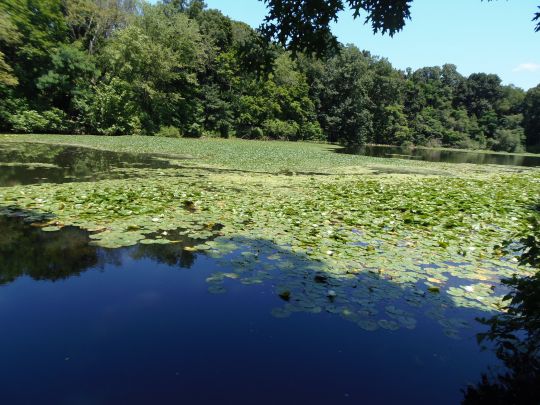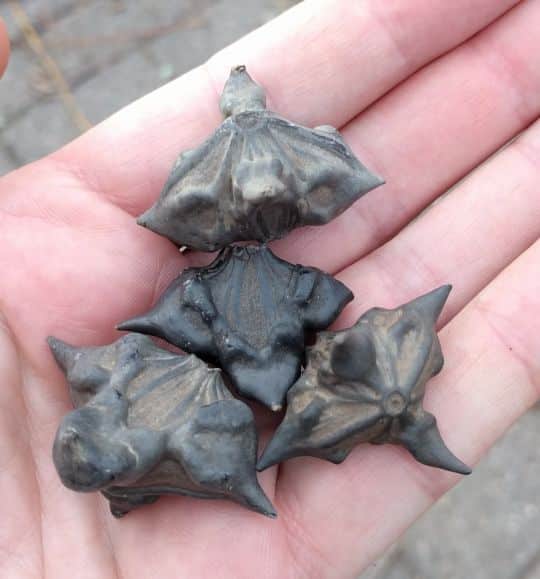
European Water Chestnut
(Trapa natans)
Description
Water chestnut has sharply serrated leaves which float on the surface of water similar to a lily pad, but smaller in size. It grows in shallow areas up to around 4 meters in-depth, and the leaves grow outward from a central pion in a circular form. Water chestnut can take over large areas and block sunlight from penetrating beyond its leaf cover. This can be harmful to native species as decomposition rates are altered, decreasing water/oxygen levels. If you have ever seen sharp barbed seeds along a shoreline, you may have seen evidence of a water chestnut plant. The seeds do not look like an edible water chestnut. It was first introduced into North America in the late 1800s after it was planted in ponds, after this, it spread all throughout eastern North America.
Range
European water chestnut is a huge issue in the eastern united states and had only minorly spread into southern Canada. It is found in multiple sections along the Ottawa river as well as sections of lake Ontario.
Impacts
Growing in large masses this plant can take over areas, preventing swimming, fishing and inhibiting boating as the plant gets caught in propellers.

Impacts & Control
It is illegal to possess or sell European water chestnuts. It is also advised that if boating in the Ottawa river or other water body with water chestnut, be extremely thorough when cleaning your boat after withdrawing it from the water.




